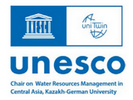



Year: 2017
Collections: Scientific Publications
Topics: Water, Climate
Authors: Kalashnikova O. Ju., Abdibachaev U. A., Moldobekov B. D.
Countries: Kyrgyzstan
Year: 2021
Collections: Scientific Publications
Topics: Water, IWRM
Authors: Tulemisova G., Amangosova A., Abdinov R., Kabdrakhimov G., Dzhanzakova B.
Countries: Kazakhstan, Kyrgyzstan, Uzbekistan, Tajikistan, Turkmenistan
Year: 2025
Collections: Scientific Publications
Topics: Water, IWRM
Authors: Gafurov A., Ziganshina Dinara, Assubayeva A., Nodir Djanibekov, Abdullaev Iskandar, Bobojonov Ihtiyor, Dombrowsky Ines, Hamidov Ahmad, Herrfahrdt-Pähle Elke, Janusz-Pawletta Barbara, Ishangulyyev Rovshen, Kasymov Ulan, Mirkasimov Bakhrom, Petrick Martin, Strobehn Katrin
Countries: Kazakhstan, Kyrgyzstan, Uzbekistan, Tajikistan, Turkmenistan
Source: water-ca.org
Political tensions over water management in the Central Asia region have intensified since the Soviet era, as ecological issues like the drying Aral Sea and seasonal hydropower disruptions impact downstream countries. The paper discusses the region’s water governance challenges, including climate-induced uncertainties, water resource demands, and the limited capacity of local research institutions. While Central Asia’s governments have initiated reforms, including new infrastructure and agreements, resilience in water management remains underdeveloped. The paper also explores the role of higher education institutions in fostering capacity-building for sustainable governance, emphasizing the need for local expertise and regional collaboration. The proposed establishment of a Central Asian water research platform aims to enhance science-policy integration, promote sustainable water governance, and support informed regional cooperation on transboundary water issues.
Year: 2024
Collections: Scientific Publications
Topics: Water
Authors: Abdul Wahed Ahmadi, Sükrü Dursun
Countries: Kazakhstan, Kyrgyzstan, Uzbekistan, Tajikistan, Turkmenistan, Afghanistan
Source: https://water-ca.org/
Aquatic plants, including duckweed (Lemna minor), are increasingly utilized in sewage and wastewater treat-ment to improve pollution parameters and organic matter removal.
Year: 2018
Collections: Scientific Publications
Topics: Water
Authors: Thevs Niels, Aliev Kumar, Rouzi Ahemaitijiang, Abudushalike Nuerbayi
Countries: China
Year: 2024
Collections: Policy Briefs
Topics: Energy
Authors: Kobzev A., Manuel Andresh, Abylaikhan Soltanayev, Nurbek Yessetov
Countries: Kazakhstan
Source:
Year: 2021
Collections: Scientific Publications
Topics: Water
Authors: Sharakhmetov S.E., Barakbayev T.R., Adayev T.O.
Countries: Kazakhstan
Year: 2021
Collections: Research Paper
Topics: Water
Authors: Sharakhmetov S.E., Barakbayev T.R., Adayev T.O.
Countries: Kazakhstan
Year: 2024
Collections: Scientific Publications
Topics: Water
Authors: Nematullah Fetrat, Ahmad Reza Rostayee, Sai Kala
Countries: Afghanistan
Source: https://water-ca.org
The article investigates certain low-cost filtering materials and their filtration efficiency for open well sources in terms of economic access to clean water in Anakapalle, a suburb of Visa-khapatnam, India, during the pre-monsoon period of 2022. The corresponding research aimed to study a selection of filter materials including coconut shell activated carbon, rice husk ash, manganese modified sand, and graphene oxide, as well as assess their performance against selected physico-chemical parameters of water. Considering the basic idea of slow sand and gravity-based filtration, a setup was arranged with a cartridge filled with layers of filtering materials and a ceramic candle filter. Adsorption turned out the most pronounced removal mechanism that took place when utilizing the aforementioned filter materials. The main focus of the study was to reduce pH, TDS, hardness, alkalinity, chlorides and iron content by applying dif-ferent filtration removal mechanisms. The study results show a significant drop in turbidity, pH, TDS and chlorides, and small reduction in hardness when coconut shell activated carbon and rice husk ash were used as filtration media. Whereas the chemically coated medium – manga-nese modified sand – demonstrated a considerable fall in iron concentrations, graphene oxide sand was observed to reduce alkalinity for any sample source.
Year: 2024
Collections: Scientific Publications
Topics: Water, Climate
Authors: Aidar Zhumabaev, Hannah Schwedhelm, Beatrice Marti, Silvan Ragettli, Tobias Siegfried
Countries: Kazakhstan
Source: https://water-ca.org
The Badam River, a tributary to the Arys River located in the Syr Darya basin, is a crucial natural resource for ecological, social, and economic activities in the semi-arid region of southern Kazakhstan. The river basin is heavily influenced by manmade water infrastructure and faces water scarcity, particularly during summer, highlighting the importance of understanding its hydrological processes for effective water resource management. In this study, a semi-distributed conceptual hydrological model of the Badam River was implemented using the RS MINERVE hydrological software to evaluate the impacts of climate change on hydrology and to test the resilience of the water system. Connected HBV models were implemented for each of the hydrological response units that were defined as altitudinal zones. The hydrological model was calibrated using daily time steps between 1979 and 2011, and the resulting flow exceedance curves and hydrographs were used to assess the potential impacts of climate change on the basin, using CMIP6 precipitation and temperature scenarios. Future climate scenarios for the 2054 – 2064 period demonstrate that the peak discharge will be shifted to spring/late spring compared to the current early summer with no significant decrease in average discharge per day of the year. The insights gained from this hydrological-hydraulic model can be used to effectively manage the water system and inform future hydropower design decisions and serve as a blueprint for similar studies in the region and elsewhere.
Year: 2020
Collections: Research Paper
Topics: Water
Authors: Krupa E., Barinova S., Romanova S., Aubakirova M., Ainabaeva N.
Countries: Kazakhstan
For questions about cooperation, please contact us at: